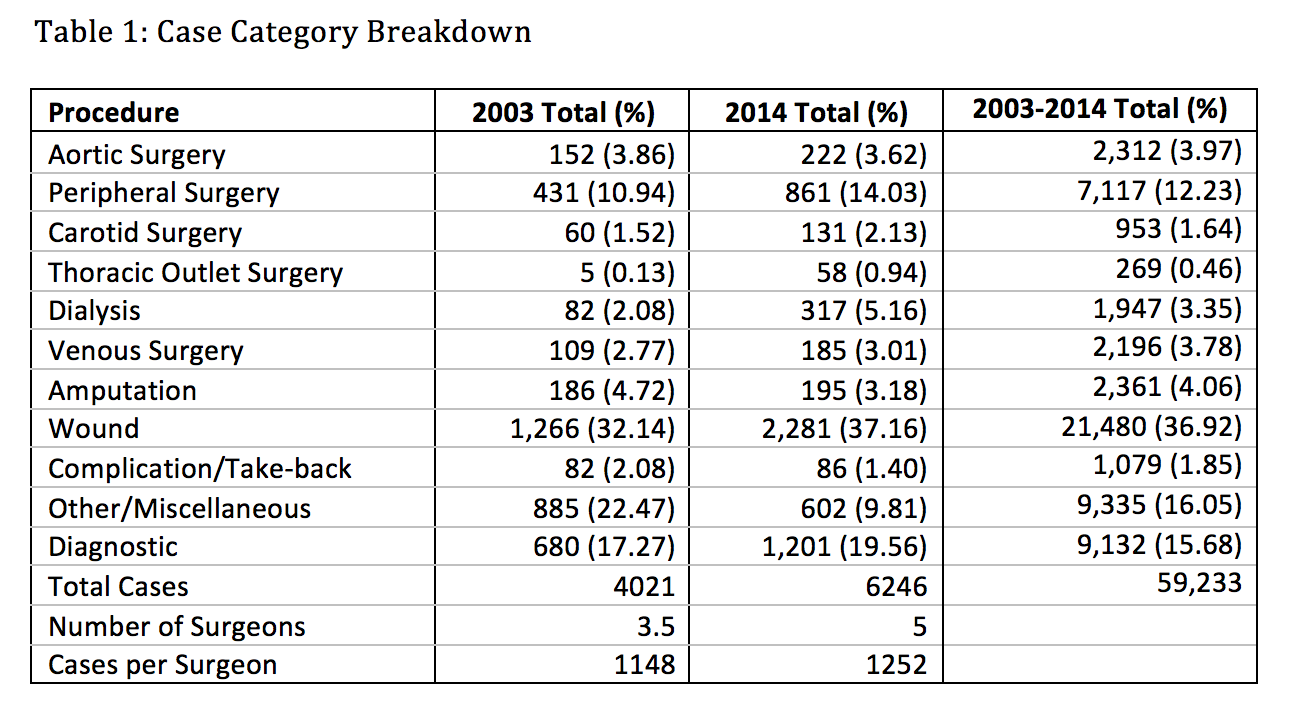The Picture of a Vascular Surgeon
Adam Tanious, MD, MMSc1, Mathew Wooster, MD1, Paul A. Armstrong, DO1, Karl A. Illig, MD1, Brad Johnson, MD1, Martin R. Back, MD2, Aurelia Calero, MD1, Murray L. Shames, MD1.
1University of South Florida, Tampa, FL, USA, 2University of Florida, Gainesville, FL, USA.
Introduction:
The SVS defines a vascular surgeon as an individual versed in all modalities of treatment for the vascular system. What exactly is included in this definition remains unclear to the lay public, and perhaps more importantly to other healthcare providers who may not know to whom to refer their patients. Our goal is to illustrate the picture of what a vascular surgeon does, how it has evolved over a decade at a tertiary care center, and thereby help define the specialty for the purposes of “branding” and clarifying goals for training programs.
Methods:
Billing records were reviewed for all patients treated by our vascular surgery faculty from 2003-2014. Procedure codes were grouped into categories for quantification and the patient population was assessed based on age and sex.
Results:
Our average academic vascular surgeon completed between 1000-1400 cases per year, which did increase significantly over time even with the loss/addition of faculty during the period studied. With regard to overall case-mix, there were 11 major case categories that defined our practice detailed in Table 1 with representative yearly totals.
Overall, endovascular case volume increased significantly going from 49% of our case volume in 2003 to 66% of our case volume in 2013. The most commonly performed procedures were wound care surgery followed by diagnostic procedures throughout the study period. Peripheral vascular surgery became the third most common procedure (going from 11 to 14% of our case volume), while amputations and miscellaneous procedures where the only category to significantly drop over the 11 years. Other significant trends include dialysis access increasing from 2 to 5.1% of our practices’ case mix while wound care rose from 32 to 37%.
Conclusion:
The definition of a vascular surgeon continues to evolve along with the field. As a specialty we can now state with clarity the services we perform. Moving forward it allows us to communicate to our colleagues and recruit future medical students to our field. 
Back to 2018 ePosters




